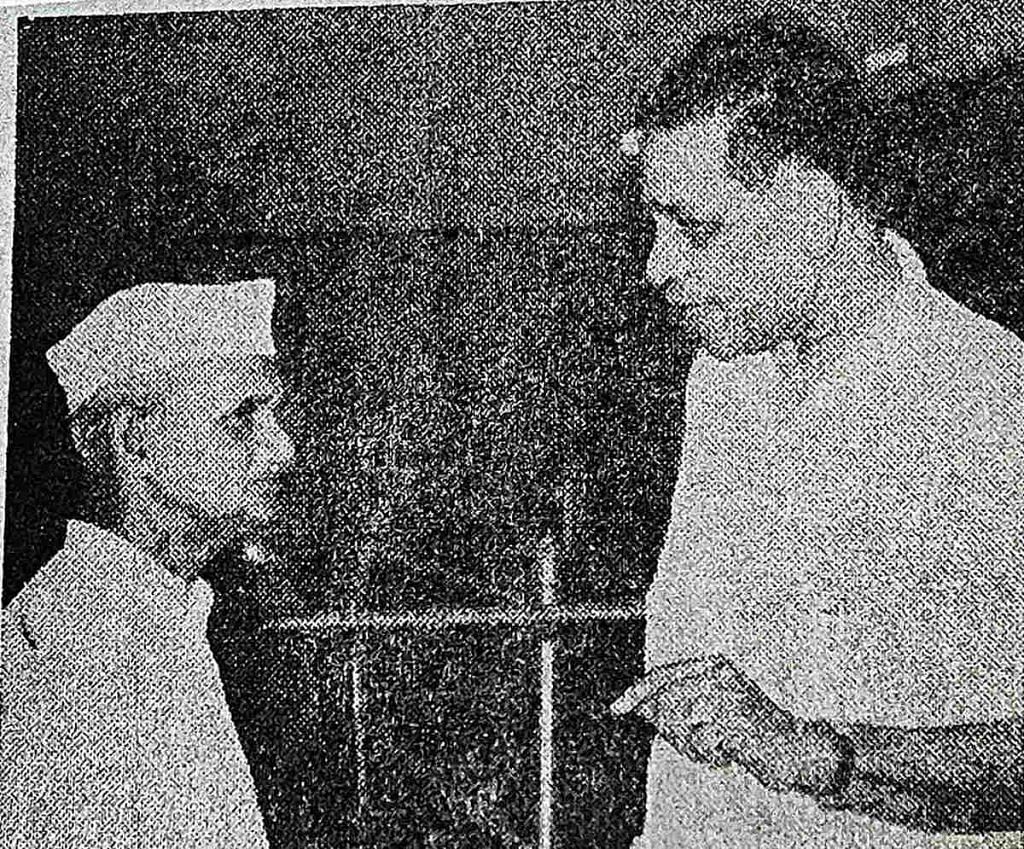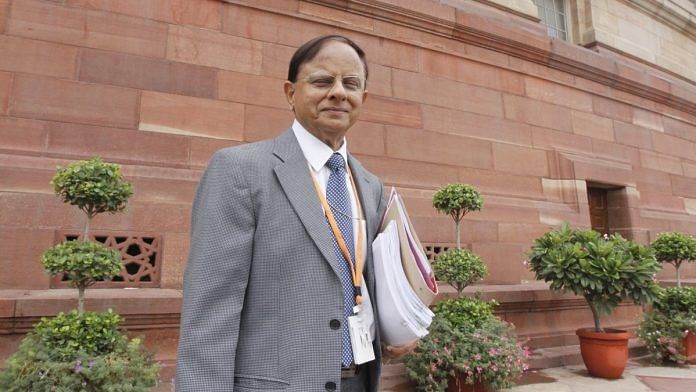On 16 June 1964, a seemingly innocuous insertion in the Government of India Allocation of Business Rules 1961 gave statutory status to the newly minted Prime Minister’s Secretariat, or PMS. The mandate given to it was simple: “to provide secretarial assistance to the Prime Minister”. However, this development was to have much more far-reaching effects. It diminished—forever—the role of the cabinet secretary, who had hitherto been in charge of coordination amongst different ministries and played a key part in deciding the seniormost appointments in the country.
It is indeed ironic that what’s now called the Prime Minister’s Office (PMO), the most ‘powerful’ government office that’s often accused of giving India a de facto presidential form of governance, was created by one of the most ‘consultative’ prime ministers—Lal Bahadur Shastri.
The first incumbent chosen for the position of PMS secretary was the Indian Civil Service (ICS) mandarin LK Jha, who, besides being brilliant, efficient, competent, and hardworking, was also completely in sync with Shastri’s economic and political views – especially regarding curtailing the size of the fourth Five-year plan, reducing the fiscal deficit, and improving relations with the USA. He enjoyed the complete trust of the PM and had a good rapport with the cabinet secretary Dharam Vira, who was his senior in the ICS, but was soon overshadowed because of Jha’s (perceived) proximity to the PM.
Also Read: How was BSF born? Pakistan’s plotting, Lal Bahadur Shastri’s swiftness
A new power centre
Shastri set up the PMS within a month of becoming Prime Minister, and as Inder Malhotra, a keen observer of the power games at Raisina Hill, wrote, the new government institution “almost immediately, and perhaps inevitably, became a new power centre”.
Shastri had observed Jha’s functioning in the Economic Affairs Ministry, and was impressed with him, but he was equally so with LP Singh, then an additional secretary in the Home Ministry. Shastri actually wanted to have two secretaries in the PMS—Jha for economic affairs and Singh for administrative matters. But this was not to be. Jha did not countenance the idea of someone of equal rank sharing the stewardship of the PMS with him. Jha’s first ‘coup de grace’ was to ensure that Singh was not relieved from the Home Ministry by its then minister Gulzarilal Nanda. Thus, the other two colleagues with him in the PMS were joint secretary-level officers—Rajeshwar Prasad and CP Srivastava (CPS), both of whom wrote memoirs providing a ringside view of Shastri’s tenure as PM.

Prasad wrote Days with Lal Bahadur: Glimpses from the Last Seven Years, and CPS penned Lal Bahadur Shastri: Prime Minister of India 1964-1966 (A Life of Truth in Politics). In his recall of those days, CPS quotes from political scientist Michael Brecher’s book Nehru’s Mantle: The Politics of Succession in India: “There is ample evidence to indicate that the Prime Minister’s Secretariat, through the forceful personality of LK Jha, has become a major power centre in all India politics, an interest group in its own right. It has exerted pressure on many issues, notably in the vital spheres of economic policy and foreign affairs.”
This was also the impression carried by the English press and foreign correspondents who, in tone, tenor, and temperament, had more in common with Jha than the homespun Shastri, who preferred to converse in Hindi and did not cut Oxbridge jokes. In contemporary lingo, LK Jha belonged to the Khan Market set, while Shastri was the quintessential Gandhian!
However, CPS also writes that Brecher probably overestimated Jha’s role as the PM’s adviser and sounding board, especially when it came to issues connected with agriculture. According to Brecher, the primary shift in Shastri’s priority to agriculture came on the advice of Jha. This is an obvious exaggeration, for Jha was appointed on 12 July, while C Subramaniam had joined as the minister for Food and Agriculture on 9 June, and he had very clear ideas on how the sector had to be turned around, besides, of course, Shastri’s own research on the subject.
To be fair to LK Jha, he always downplayed his influence. Recollecting his tenure with Shastri, Jha wrote in the Lal Bahadur Shastri Commemoration Volume: “As I look back on those eventful months, which already belong to history, my most outstanding impression of (Shastri) is that he combined in a unique way, what might superficially seem to be two contradictory qualities. He was a man of deep humility, ready to listen to others, valuing their opinion and advice, seeking at all times to learn, rather than to lay down the law. He was also a man of deep convictions, who knew his mind, who formed his own decisions after pondering over all the points of view presented to him and once he had made up his mind, he would not waver, but stand steadfast on the position he had taken.”
Jha goes on to add, “because of his modesty, there were many who thought that it was his advisers who really shaped his policies. This impression got strengthened because it seemed that he was setting up a secretariat which was much larger, and consisting of more senior people than Prime Minister Nehru had.”
Nevertheless, there is enough evidence to show that the dynamics of power in administration had changed permanently.
Also Read: Jairam Ramesh recounts what really happened behind the scenes of the Simla agreement
Shifting controls
Former Finance Commission chairman NK Singh recalls in his memoir, Portraits of Power, that he accompanied his father TP Singh, an ICS officer, to congratulate Jha on his appointment as the secretary to the PM.
NK recounts his father saying lightly, “Congratulations, LK, for two things: First, for the high office you now occupy; and second, for this remarkable coup, which has now permanently destroyed the traditional ethos of the Civil Services establishment.”
LK was apparently quick to retort: “How can you say that? I have a profound respect for the cabinet secretary.” To this, TP had a ready rejoinder: “Let’s not get into semantics. Time will tell.”
Elaborating further on his father’s prophetic reading of the situation, NK Singh wrote: “This structural change permanently eroded the primacy of the cabinet secretary. (TP Singh) said that it was obvious that the primacy of the position of the cabinet secretary emanated from his being the last person to tender any advice to the PM and that from here onwards, as secretary to the PM, LK’s note would be the last one to be read by the PM. This made a qualitative and structural difference in the hierarchy of the civil service establishment.”
As might be expected, within the first few weeks of Jha’s appointment, there was, as Inder Malhotra put it, “intense and widespread resentment, especially from the cabinet secretary, until then the headmaster of the civil service”.
Jha added fuel to the fire by extending his control from economic affairs and domestic policy to also include foreign affairs, despite his inexperience in this field. He was often part of the Prime Minister’s entourage on foreign visits.
For instance, in 1964, during Shastri’s first foray into international affairs—the Non-Aligned Movement (NAM) conference at Cairo—the External Affairs Ministry had prepared a draft speech for him. But Jha had an alternate draft, which became the official speech of the Indian Prime Minster. This ruffled many a feather. Other changes were also afoot. In Nehru’s time, the secretary general of the foreign office was considered at par with the cabinet secretary, and the PM would often use foreign service officers as his sounding board. However, in a clear snub to the foreign office, the high-powered six-member Committee of Secretaries on External Affairs also included the secretaries of finance, commerce & industries, and defence, along with the cabinet secretary and the secretary to the PM. The home secretary, interestingly, was excluded from this committee.
After the death of Shastri, Jha continued to serve in the Secretariat, but when Indira Gandhi became PM, she did not repose the same trust in him. Instead, she handpicked PN Haksar as the head of the PMS—their relationship is best explained by Jairam Ramesh in Intertwined Lives, his scholarly treatise on the subject.
From then until now, when PK Mishra is at the helm of the PMO, this office has been the nerve centre of power. Its influence has waxed under strong leaders such as Indira Gandhi and Narendra Modi, but waned when Prime Ministers have been under siege from their coalition partners—or, as in the case of Manmohan Singh’s PMO, when the extra-constitutional National Advisory Council under UPA chairperson Sonia Gandhi became more influential.
Sanjeev Chopra is a former IAS officer and Festival Director of Valley of Words. Until recently, he was Director, Lal Bahadur Shastri National Academy of Administration. He tweets @ChopraSanjeev. Views are personal.
This article is part of a series on the PMO.
(Edited by Asavari Singh)




P N Haksar was by Mrs Gandhi’s side all through the golden phase of her career. After he left, things began to unravel.